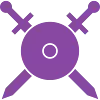بعض الترجمات لهذه اللعبة تم انشاؤها تلقائيًا وتحتاج إلى المراجعة لتحسين جودتها. يمكنك المساعدة من
مركز الترجمة.
العب greatwesterntrail و 1045 ألعاب أخرى online.
لا يلزم التنزيل - العب مباشرة من متصفح الويب الخاص بك.
مع أصدقائك وآلاف اللاعبين من أنحاء العالم.
مجاني.
اخر تحديث
Dear players, a new arena season has started and some options changed for Age of Civilization:
| Previous season | New season |
|---|
| Number of players | 2 | 3 |
شاهد المزيد

تحد
أفضل اللاعبين في العالم
أصبح البطل التالي ل
greatwesterntrail
[en]
Asian Railroads - New Rules
معلومات اللعبة
مصمم
Helmut Ohley, Leonhard "Lonny" Orgler
رسام
محرر
سنة
المطور
عدد الألعاب التي تم لعبها
عدد اللاعبين
مدة اللعبة
مستوى التعقيد
استراتيجية
حظ
تفاعل
متاح منذ
إطلاق
greatwesterntrail على الويب
العربية
беларуская мова
български език
Brezhoneg
Català
čeština
Dansk
Deutsch
Ελληνικά
English
Español
Eesti keel
فارسی
Suomi
Français
Galego
עברית
Hrvatski
Magyar
Italiano
Bahasa Indonesia
日本語
한국어
Lietuvių
Latviešu
Bahasa Malaysia
Nederlands
Norsk
Polski
Português
Română
Русский язык
Slovenčina
Slovenščina
Српски
Svenska
ไทย
Türkçe
Українська мова
Tiếng Việt
中文 (漢)
中文 (汉)



